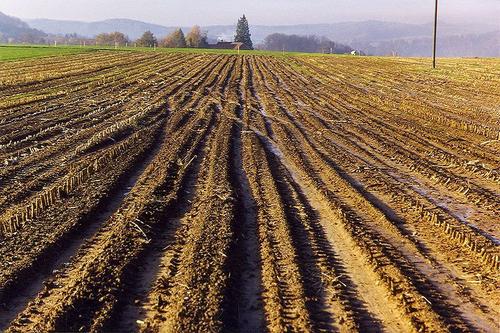Compaction is a process in which soil layers lose some or most of their characteristic pore space and beneficial structure and as a result become less permeable. Compaction can lead to a number of undesirable soil characteristics including reduction in pore space, increase in bulk density, reduction in the amount of water held in the soil at field capacity, restriction to root and water penetration, and soil erosion. It can occur naturally and due to human activity. (Soil-Net 2016c)
In agricultural soils, compaction is caused by compression from machinery traffic or stock trampling. It has been estimated that, given conventional tillage practices and other planting-harvesting farm operations, as much as 90 % of a paddock will be wheel tracked on an annual basis and that most of the area receives 4 or 5 wheel passes. Compaction usually results in less plant root proliferation in the soil and lowers the rate of water and air movement. Because of the root restriction, the amount of water available to the crop is often decreased. Slower internal drainage results in poorer subsurface drain performance, longer periods of time when the soil is too wet for tillage following rainfall or water application, increased denitrification and decreased crop production. Increased compaction also adds to the energy consumption by tractors for subsequent tillage. Most effects of compaction are detrimental. However, in some cases, slight compaction near seeds can aid germination and improve plant growth in times of low soil moisture caused by low rainfall or low water-holding capacity soils. Prevention of compaction is better than treating it. Compaction can be prevented by reducing additional tillage passes, controlling traffic patterns, removing weight on machinery and wheels (reduce surface pressure), varying the annual tillage depth, rotating crops, growing vigorous pasture and eventually deep ripping. (Cotching & Davies 2016)
